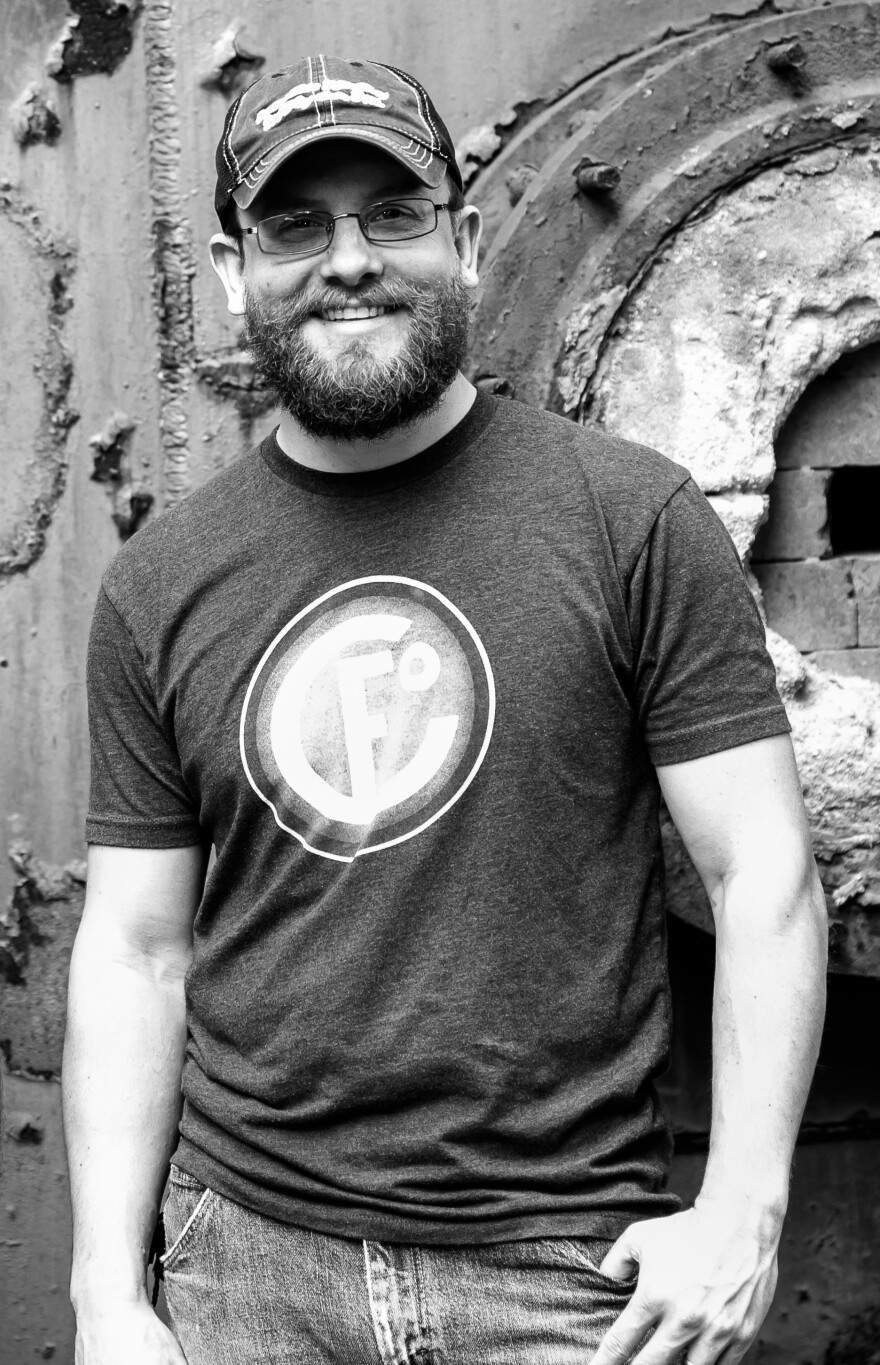Chris McGinnis grew up in Indiana County and often spent family vacations at a camp in Allegheny National Forest, two hours north of Pittsburgh. He and his siblings explored the remains of an old tanning mill on the Clarion River – a ghost town recalling an industry of days gone by.
"Chris McGinnis: Arroyo" runs through Dec. 28 at Boxheart Gallery, 4523 Liberty Ave., Bloomfield. Opening reception: 5-8 p.m. Sat., Nov. 17.
McGinnis went on to become an artist with an abiding interest in the regional landscape. His latest series of paintings, titled “Arroyo,” draws on historical photographs and images from McGinnis’ own experience to evoke how the area once dominated by Arroyo has changed.
“Every time I would go up there as a child, I was immersed not only in the natural wonder and beauty this place, but also this ruins that told a different kind of story about the history,” he says.
“Arroyo,” he says, “has elements of my history, elements of the deep history of the region, and then realities of how things have changed there both from an industrial and a cultural standpoint.”
McGinnis’ work has been exhibited nationally and internationally, and he’s an educator and curator as well as an artist. His day job also reflects his fascination with the places where industry meets the natural world: He’s founding director and chief curator for Rivers of Steel Arts, a division of Rivers of Steel Heritage Area, and co-founder of Alloy Pittsburgh, a site-based art project at the Carrie Furnaces National Historic Landmark.

“Arroyo” features 27 paintings, all made with ink washes and oils on an unusual but thematically appropriate material: deer hide stretched on wood.
“It’s a quite beautiful material to work on, a lot of the follicle details of the hair really kind of get into the depth of the material when you see it up close,” he says. McGinnis wanted to source the hides locally, but it wasn’t feasible, and he ended up getting them from a tannery in Washington state.
The images in “Arroyo” juxtapose past and present. Some give a sense of another of Pennsylvania’s big industries around the turn of the 20th century: lumbering. Tanning and timber are inextricably linked, because after the bark was stripped from the tree trunks before they were floated downstream to mills, that bark was sent to tanneries to extract tannin, the chemical used to turn raw cowhides into leather. (Along with shoes and clothing, McGinnis notes, much of the leather produced in that era was used for belts used in machinery.)
The quantities of material involved were vast. “There are some of these really beautiful and fantastic images of massive mounds of bark that looked like buildings themselves,” says McGinnis. “Really, they’re just stacks maybe 30 feet high of bark in like this long, long pile till the end of the mill.”
The Arroyo tannery was one of many in the region. Of course, McGinnis – who credits the Elk County Historical Society, for research assistance -- never saw it in operation. By the time he and his siblings came on the scene, there were just the remnants of a railroad and the foundations of buildings largely reclaimed by the forest. Second-growth forest, that is: By the 1910s, the logging industry had basically deforested Pennsylvania, also heralding the beginning of the end for tanneries here (though McGinnis, based on stories from his late grandfather, believes that the Arroyo mill operated in some form into the 1940s).
These days, the Arroyo region, in Elk County, has a big tourist draw in outdoor recreation (though the economy is also increasingly impacted by drilling for natural gas).
The paintings in “Arroyo” range from several inches to several feet wide. They’ll be exhibited on the second floor of Bloomfield’s BoxHeart Gallery. The opening reception is Saturday, simultaneous with the opening reception for the gallery’s new first-floor show, "Nichole Gronvold Roller: Above Ground," a collection of paintings by the Illinois-based artist.
[Editor's note: The original post has been edited to accurately reflect a source of the artist's research materials.]






